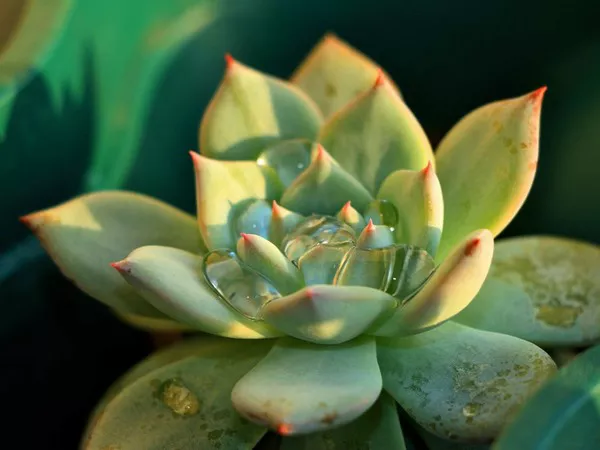Succulents, with their unique and captivating appearances, have become increasingly popular in both indoor and outdoor gardening. However, like any other plants, succulents are susceptible to pests and diseases that can hinder their growth and beauty. One such pest that poses a significant threat to succulents is scale insects. In this article, we will delve into the world of scale insects, exploring their impact on succulents, and providing an in-depth guide on prevention, identification, and control methods.
Understanding Scale Insects and Their Impact
Scale insects are small, immobile pests that attach themselves to the surfaces of plants, including succulents. They feed by piercing the plant’s tissues and withdrawing sap, leading to weakening, stunted growth, yellowing, and eventual decline of the plant. Scale insects also excrete a sticky substance called honeydew, which promotes the growth of black sooty mold and attracts ants, further exacerbating the situation.
Succulents, with their thick leaves and unique growth patterns, might seem resistant to pests, but they are not immune to scale infestations. Identifying and addressing these infestations promptly is crucial to maintaining the health and aesthetics of your succulents.
Preventing Scale Infestations
The adage “prevention is better than cure” holds true when it comes to succulent care. Employing preventive measures significantly reduces the likelihood of scale infestations. Here’s how you can create an environment that discourages these pests from taking residence:
1. Inspect New Plants: Before introducing new succulents to your collection, thoroughly inspect them for any signs of scale or other pests. Quarantine new plants for a few weeks before placing them near existing plants.
2. Optimal Growing Conditions: Provide the ideal growing conditions for your succulents. Healthy plants are better equipped to resist and recover from pest attacks. Ensure proper sunlight, well-draining soil, and adequate airflow.
3. Avoid Over-Fertilization: Over-fertilization can make succulents more susceptible to pests, including scale insects. Follow a balanced fertilization regimen to prevent creating an environment that attracts pests.
4. Regular Cleaning: Keep your succulent’s environment clean by removing fallen leaves and debris. This reduces hiding places for pests and eliminates potential breeding grounds.
5. Quarantine and Isolation: Isolate any succulents that show signs of scale infestations immediately. This prevents the pests from spreading to other plants.
Identifying Scale Insects
Scale insects come in various shapes, sizes, and colors, making identification a bit challenging. They typically appear as tiny, round or oval bumps on leaves, stems, or even the undersides of succulent leaves. Identifying the specific type of scale infestation is important for determining the appropriate control method.
1. Armored Scales: These scales have a hard, protective covering that resembles a shell. They are usually brown, black, or gray and can be challenging to remove due to their protective coating.
2. Soft Scales: These scales have a softer, more pliable covering and tend to be larger than armored scales. They come in various colors, including shades of brown, yellow, and green.
3. Crawlers: Young scale insects, known as crawlers, are mobile and can easily spread to other plants. Identifying crawlers is crucial for timing control measures effectively.
Control Methods
When it comes to dealing with scale insects on succulents, a multi-faceted approach is often the most effective. Here are some methods to consider:
1. Manual Removal: For a minor infestation, carefully scrape or brush off the scales using a soft toothbrush or a cloth soaked in rubbing alcohol. This method works best for larger scales.
2. Pruning: If the infestation is severe, consider pruning heavily infested parts of the succulent. Dispose of the pruned material away from your other plants.
3. Insecticidal Soap: Insecticidal soaps can be effective against soft scales and crawlers. These soaps suffocate the insects on contact. Be sure to follow the product’s instructions and test it on a small area before applying to the entire plant.
4. Neem Oil: Neem oil is a natural insecticide that disrupts the growth and development of scale insects. It also has repellent properties that deter pests from feeding on plants.
5. Systemic Insecticides: For persistent infestations, systemic insecticides can be used. These are absorbed by the plant and kill scales when they feed on the plant’s sap. Exercise caution and follow the instructions closely, as systemic insecticides can impact other beneficial insects.
Maintaining Scale-Free Succulents
After successfully controlling a scale infestation, it’s important to maintain vigilance to prevent their return. Regularly inspect your succulents for any signs of reinfestation, and continue practicing the preventive measures mentioned earlier.
Conclusion
Succulents are cherished for their unique appearance and relatively low maintenance requirements, but they are not immune to the threat of scale insects. By understanding the nature of scale infestations, identifying their presence, and implementing effective prevention and control strategies, succulent enthusiasts can ensure the health and beauty of their plants. Remember that a combination of regular inspection, proper care, and timely intervention is key to maintaining scale-free succulents that thrive for years to come.


